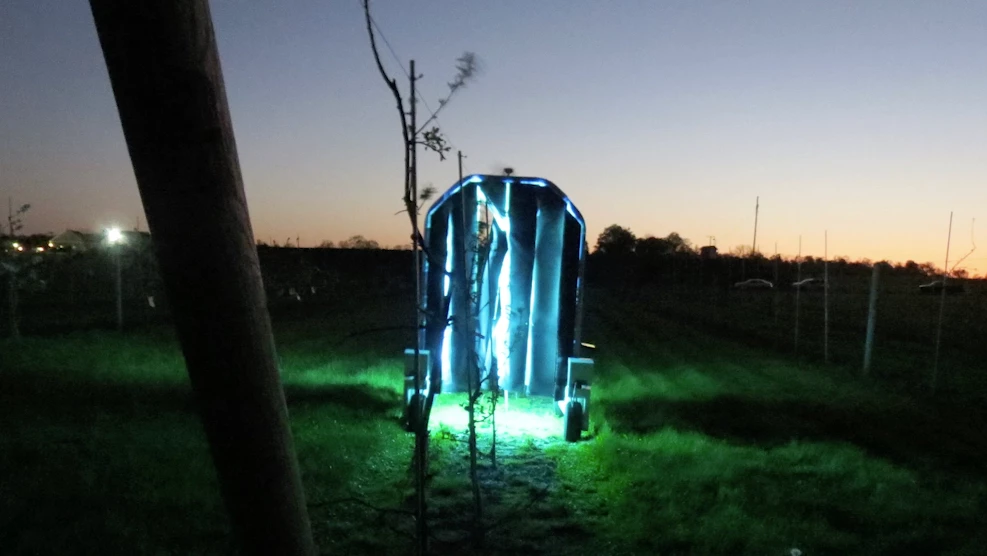Powdery mildew is a widespread fungal disease that attacks many crops. And while it typically has to be treated using fungicides, special ultraviolet light-emitting robots could soon prove to be a better way to go.
There are several problems with the use of powdery mildew fungicides. For starters, they're expensive, environmentally unfriendly, and time-consuming to apply. Additionally, because the fungus adapts to them on an ongoing basis, new versions constantly have to be formulated.
Like other organisms, the powdery mildew fungus is vulnerable to the DNA-damaging effects of ultraviolet light. It has a defense mechanism that protects it from UV rays, though, which is triggered by the blue light within natural sunlight. This means that even though sunlight also contains ultraviolet light, the fungus isn't harmed by it.
In order to get around this problem, an international team of scientists has created wheeled robots that autonomously move along rows of grapes in vineyards, every night after the sun has gone down. As they do so, the "Thorvald" robots shine UV light onto the plants' leaves. Because no blue light is present, the fungus' defense system isn't triggered.
As a result, powdery mildew is successfully eliminated. And because the intensity of the UV light is relatively low, the plants themselves remain unharmed. The technology has also proven to be effective against downy mildew (another fungal disease), along with certain types of pest insects.

A couple of the Thorvalds are currently undergoing field trials in two vineyards in the state of New York. Down the road, plans call for the system to also be capable of detecting how much of the fungus is present on individual plants, so it can vary the light treatment accordingly.
The research group includes scientists from Cornell University, the University of Florida, New York's Rensselaer Polytechnic Institute, and Norway’s Institute of Bioeconomy. Norwegian company SAGA Robotics designed and built the robots.
Source: Cornell University




